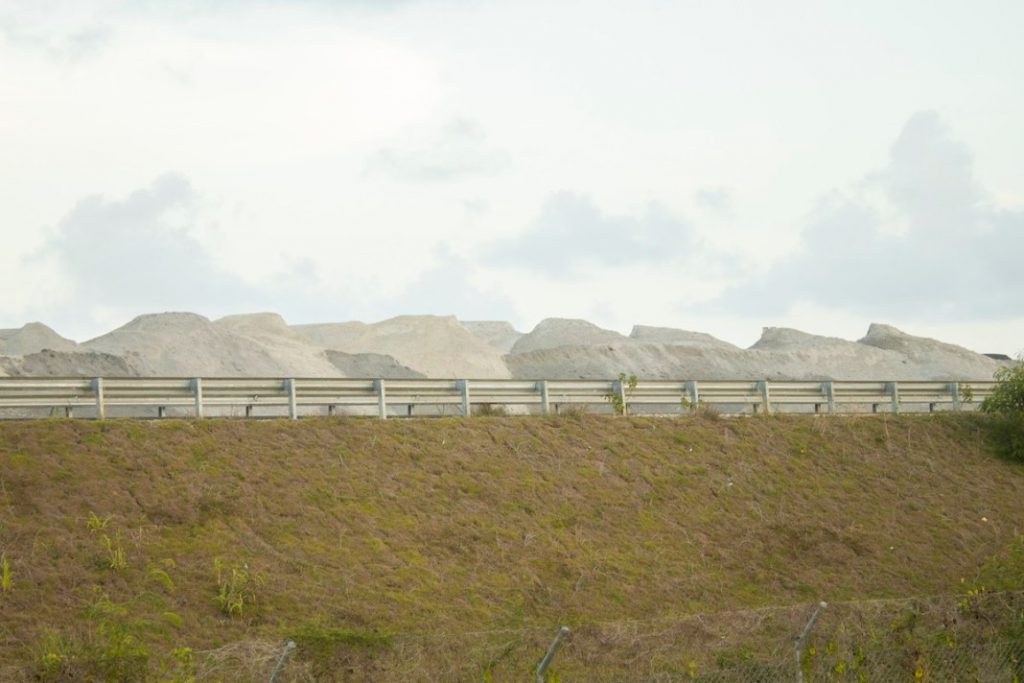
In 2007, the foreign energy company AES was fined with US$6 million for importing rock ash wastes to the Dominican Republic. The rock ash was deposited in Samaná and Montecristi. AES paid the money in a deal where the Dominican government agreed to withdraw its claim against them in US courts. The money would be used for the final disposition and proper treatment of rock ash that had been shipped from AES power plants in Puerto Rico.
Now rock ash is being made in the Dominican Republic. The Punta Catalina coal-fired thermoelectric central, the largest infrastructure work carried out by the Medina administration, is producing the toxic waste and storing hundreds of thousands of tons of it outdoors. The National Committee for the Fight Against Climate Change (CNLCC) denounces more than 400,000 tons of rock ashes have already been deposited in an embankment located in the Batey San José, less than two kilometers from the power plant and less than 4 kilometers from Paya, that has a population of more than 15,000.
CNLCC is sharing on Instagram photographs of the mountains of ash several meters high that are fenced and guarded in a “high-risk area.” CNLCC says the ashes are highly toxic because they contain arsenic, silica, ferric oxide, alumina, titanium oxide, calcium oxide, magnesium, sulfur, sulfur trioxide, potassium oxide, sodium oxide, phosphoric anhydride and mercury.
“As we had warned over these years, the Public Electricity Corporation (CDEEE), has finally deposited the ashes of Punta Catalina outdoors and without any management program. Ever since the environmental impact study for this project was presented in 2014, we warned that this waste would become the most serious and dangerous problem for these plants,” says CNLCC.
The CNLCC issued a call of extreme alarm to the people living in Nizao, Don Gregorio, Pizarrete, Catalina, Paya and the city of Baní. The toxic wastes are a threat to people’s health, especially children and pregnant women, and to agriculture.
The CNLCC says that in a couple of years, these ashes will be hundreds of meters high since every year Punta Catalina produces 400,000 tons of ashes that are being deposited there. The ashes are the 10% waste derived from the four million tons of coal burned by Punta Catalina each year.
The matter is worse because the tons of ashes are in the open air. The wind carries them over the 50 km distance that separates the deposit from Baní, the capital city of the province, and to large farming areas in the province. The CNLCC says that since the ash is soluble in water, when it rains on the mountains of ashes, these spread throughout the area contaminating both surface and groundwater.
If a storm or a cyclone passes near the coast, all these mountains of ashes will spread throughout the region and flood the entire farming area, causing an irreparable ecological and health disaster, warns CNLCC.
Read more in Spanish:
Somos Pueblo
Diario Libre
Instagram
4 June 2020

